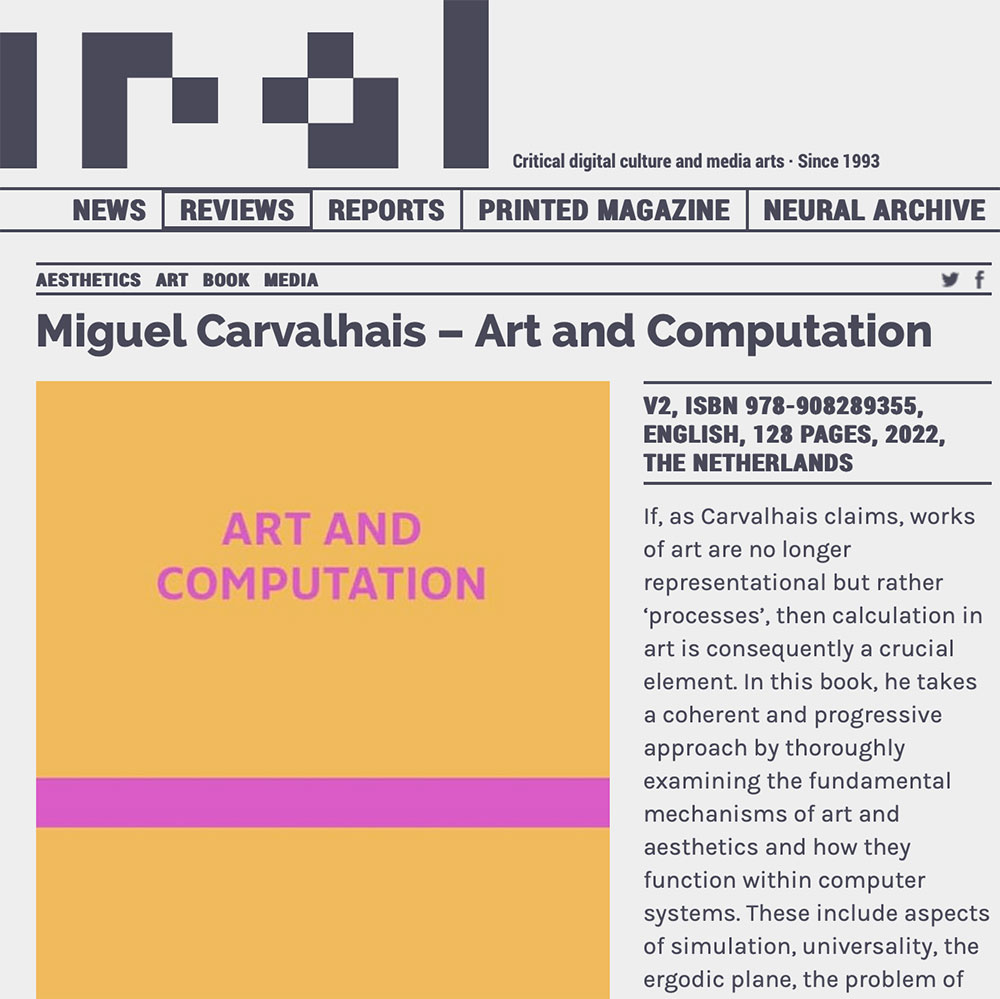Art and Computation reviewed by Neural

If, as Carvalhais claims, works of art are no longer representational but rather ‘processes’, then calculation in art is consequently a crucial element. In this book, he takes a coherent and progressive approach by thoroughly examining the fundamental mechanisms of art and aesthetics and how they function within computer systems. These include aspects of simulation, universality, the ergodic plane, the problem of ‘closure’ in comparison to traditional media, and the slippery deceptions of fleeting computational experience. In addition, a separate chapter explains the essential qualities of computation with its unique dynamic and transient properties. It is widely acknowledged that our world is turning into a ‘code space’ from which ‘we can’t anymore remove computation from, without fundamentally breaking it down’, so understanding this space becomes an increasingly essential task. And that is precisely what this small and dense book is about, a lucid, insightful and comprehensive elaboration of computational space from an artistic position. It deals synthetically with a variety of interrelated aspects of art that emerges through processing and its media, offering a new and meaningful overall understanding. Published a few years after Carvalhais’ ‘Artificial Aesthetics’ [1], the book is both an ideal companion and essential reading.